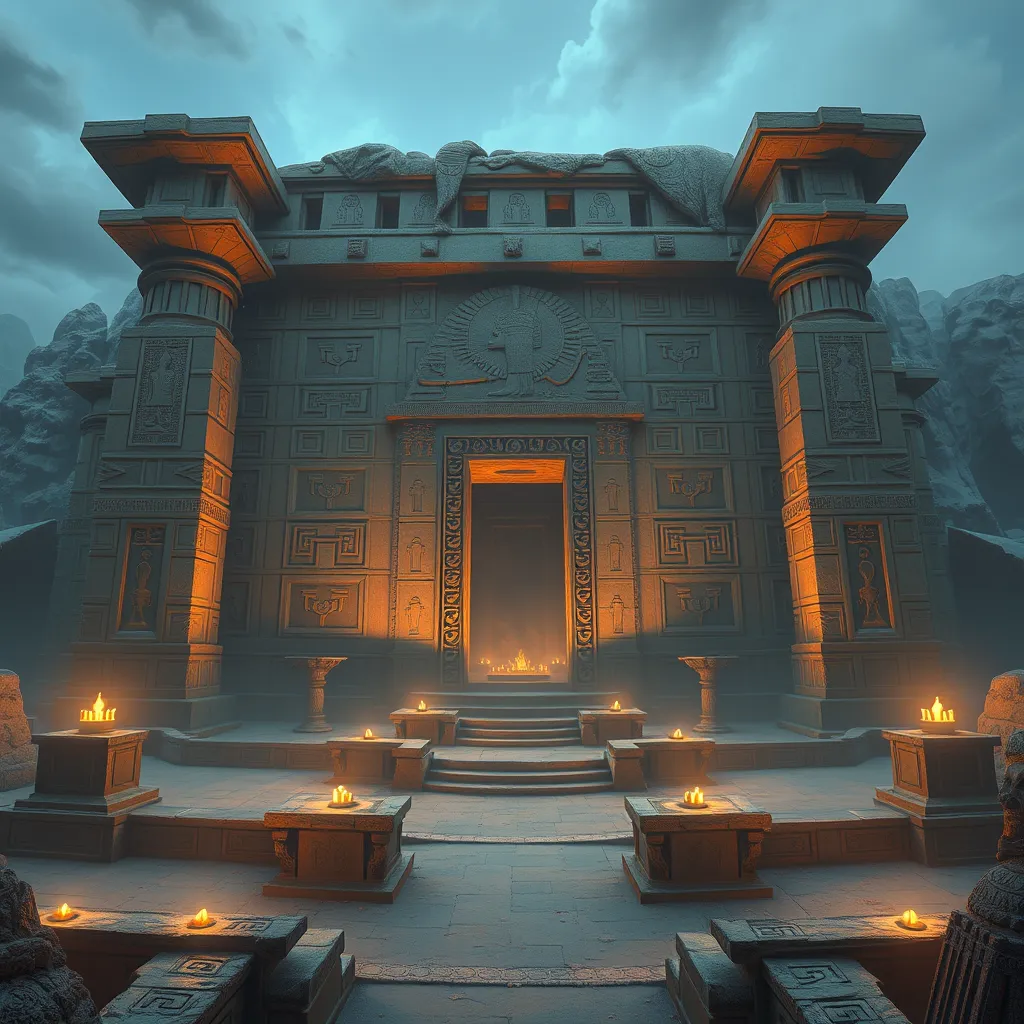The Duat: A Labyrinth of Trials and Triumphs
Introduction to the Duat
The Duat, often referred to as the realm of the dead, is a significant concept in ancient Egyptian mythology. It is the afterlife, a mysterious and complex place where the souls of the deceased journey to secure their place in eternity. The Duat is not merely a destination but a labyrinthine realm filled with trials, challenges, and ultimately, the potential for eternal life.
In Egyptian beliefs, the Duat was viewed as a necessary passage that every individual must traverse after death. Its significance lies in its portrayal of the afterlife as a realm not only of judgment but also of transformation and rebirth.
Mythological Origins and Beliefs
The concept of the Duat is deeply rooted in the historical context of ancient Egyptian culture. It reflects their beliefs about death, the afterlife, and the moral values they held dear. The Duat served as a bridge between the mortal world and the eternal, where the soul was judged based on its actions during life.
Key deities associated with the Duat include:
- Osiris: The god of the afterlife and resurrection, Osiris presided over the Duat and was responsible for judging the souls of the deceased.
- Anubis: The god of mummification and the afterlife, Anubis was depicted as a jackal or a man with a jackal’s head. He guided souls through the Duat and oversaw the weighing of the heart ceremony.
The Structure of the Duat
The Duat is often depicted as a vast, intricate landscape with various regions, each representing different aspects of the journey through the afterlife. It is commonly illustrated in tombs and burial texts, showcasing a world filled with rivers, fields, and mysterious landscapes.
Some symbolic representations within the Duat include:
- Rivers: These were seen as obstacles that souls must navigate, often associated with the waters of chaos.
- Fields of Iaru: Also known as the Field of Reeds, this area symbolizes paradise where the worthy reside in eternal bliss.
Trials Faced by Souls in the Duat
The journey through the Duat is fraught with challenges that test the character and virtue of the deceased. Souls encounter numerous trials that reflect their moral choices during their lives.
One of the most significant challenges is the weighing of the heart ceremony. In this ceremony, the heart of the deceased is weighed against the feather of Ma’at, the goddess of truth and justice. The implications of this ceremony are profound:
- If the heart is lighter than the feather, the soul is deemed worthy and can proceed to the Field of Reeds.
- If the heart is heavier, it is devoured by Ammit, a fearsome creature, resulting in the soul’s destruction.
Mythical Creatures and Guardians
The Duat is inhabited by a variety of mythical creatures and guardians, each playing a role in the trials that souls must endure. These beings can be both helpful and harmful, reflecting the dual nature of the afterlife.
Some notable inhabitants of the Duat include:
- Serpents: Often representing chaos and danger, these creatures can hinder a soul’s progress.
- Demons: Various demonic entities challenge souls and serve as guardians of specific regions within the Duat.
These creatures symbolize the fears and obstacles that individuals face in life, making the journey through the Duat a reflection of their earthly experiences.
The Journey Through the Duat
The journey through the Duat is a step-by-step process that requires knowledge, courage, and the right tools. The deceased must navigate through dark passages, face trials, and invoke the help of deities and protective spells.
Key elements of the journey include:
- Spells and Texts: The Book of the Dead contains a collection of spells designed to assist the deceased in overcoming challenges and ensuring safe passage through the Duat.
- Guidance from Deities: Anubis and other gods offer guidance and protection to souls, helping them to navigate the treacherous landscape.
Triumphs and the Rewards of the Duat
Souls that successfully navigate the trials of the Duat are rewarded with eternal life and entry into the Field of Reeds, a paradise where they can exist in peace and abundance. This area is depicted as a lush, fertile land, mirroring the best aspects of life on earth.
The concept of eternal life in the Field of Reeds signifies not only a reward for the righteous but also a continuation of existence in a state of bliss, free from the struggles of mortal life.
The Duat’s Influence on Modern Culture
The legacy of the Duat continues to resonate in modern culture, influencing literature, art, and popular media. The fascination with ancient Egyptian beliefs and mythology is evident in:
- Literature: Many authors draw upon the themes of the Duat in their works, exploring concepts of mortality, the afterlife, and moral judgment.
- Art: Artists often depict scenes from the Duat, capturing the rich symbolism and narratives that surround this enigmatic realm.
- Popular Media: Movies and video games frequently incorporate elements of Egyptian mythology, including the Duat, captivating audiences with tales of adventure and the afterlife.
The enduring allure of the Duat reflects humanity’s ongoing quest to understand the mysteries of life and death, making it a subject of continued exploration and interpretation.




